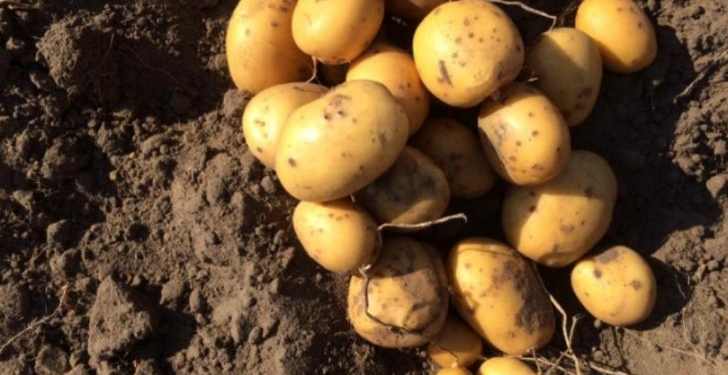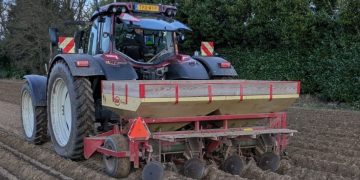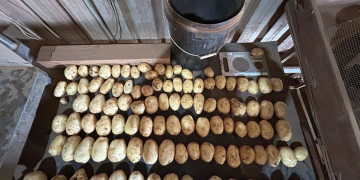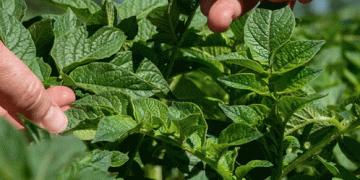In Germany the harvest of organic potatoes is completed nationwide. Individual farms still have some tubers for processing in the ground or were unable to clear them due to the continuing drought. In many regions, a complete harvest was only possible when the fields were irrigated previously.
Dry soil
Without irrigation, on light, sandy soil the risk of injury to the tubers would be large. The loose earth, necessary for the correct transport of the tubers through the machines, would fall away too quickly when dry. The heavier soils are so dry that solid clots have formed. These often sharp-edged lumps can also lead to considerable damage to the tubers.
The farmers without irrigation just have to wait until the weather changes. After the first harvest surveys by the Bio Kartoffel Erzeuger e. V., the organic potato yields have not dropped as much as the conventional ones. However, farms without irrigation have to contend with huge yield losses or even total failures.
Wound healing
After cultivation and harvest, storage is the third important component, indispensable for good quality. In storage, the potatoes undergo a period of ‘wound healing’ after being harvested. Small tears or abrasions are repaired by the tuber itself. Thereafter, table potatoes must be cooled down slowly to a temperature of approx. 4°C and then must be kept at a constant temperature. Under good conditions, the potatoes will then last up to 10 months.
These good conditions are now hard to achieve, as many potato storages are not equipped by (enough) mechanical cooling and need to be cooled by circulating (cool) outside air. The continuing drought is exacerbated by the fact that temperatures are remaining high.
Gerd Barge, operations manager of the Raiffeisen potato warehouse in Pudripp:
“Many people enjoy a ‘golden autumn’, but these temperatures of 26-28°C are much too high for the storage of potatoes.”
There, several thousand tons of organic potatoes from eastern Lower Saxony are stored.
Physiological ageing
No matter how the potatoes are stored, the costs of cooling and ventilation are significantly higher as the temperatures in the indoor rooms go up again and again. Under these conditions, early potato varieties in particular do not achieve the necessary dormancy and they will start to make shoots again. As a result, the tubers will consume additional moisture (potatoes are some 78% water) and they will soften. This does not diminish their quality, but it spoils their appearance and promotes physiological ageing.
Furthermore, there is a significant weight loss in the stored potatoes. According to the German Weather Service, the average temperatures in September and October 2018 are up to 3.8°C higher than average. So we have had a year of extremes. Drought over very long periods, paired with an unusually warm fall poses a constant challenge to agriculture in general.






